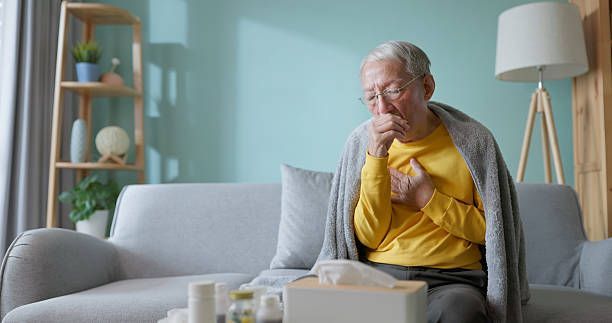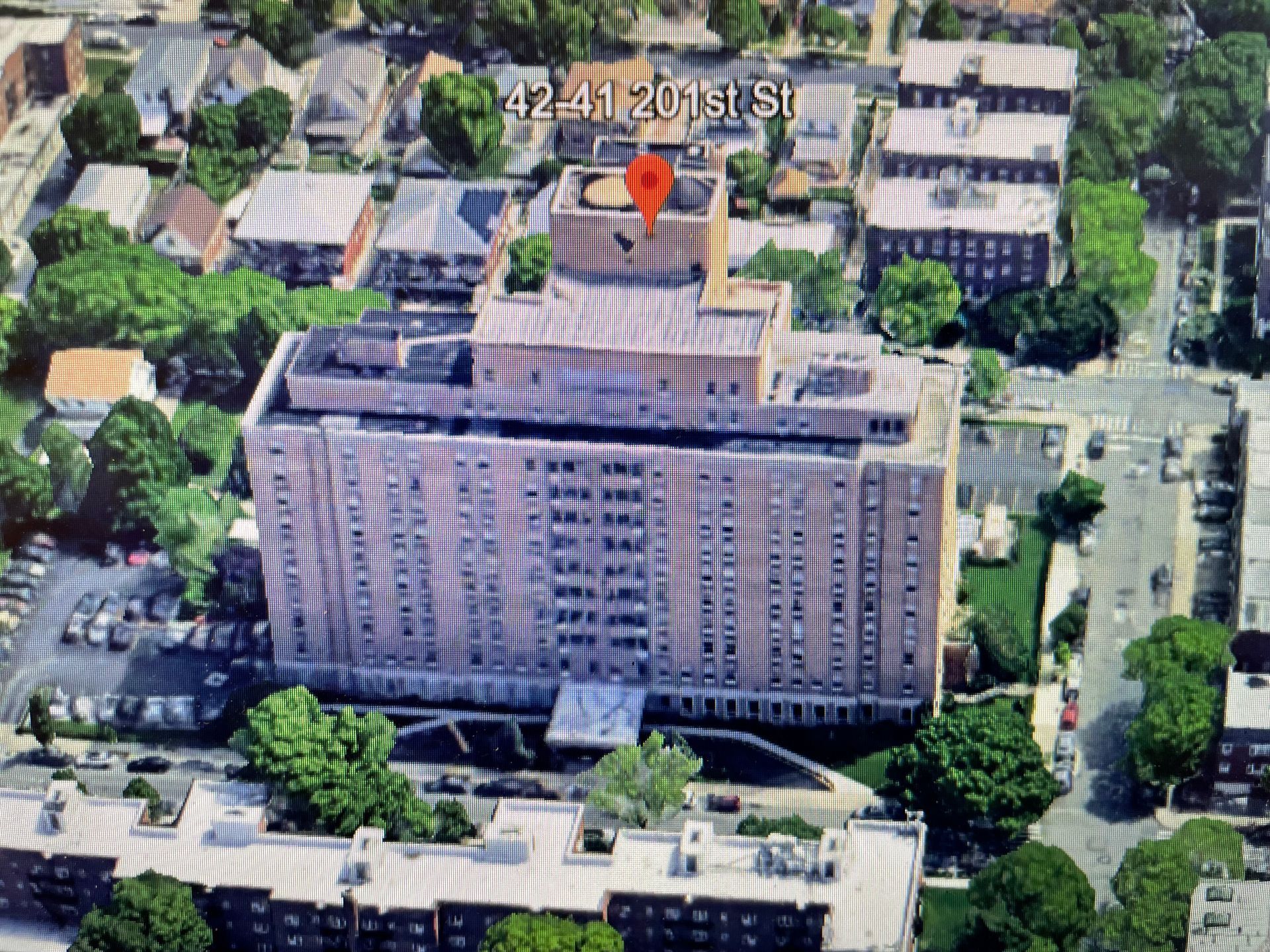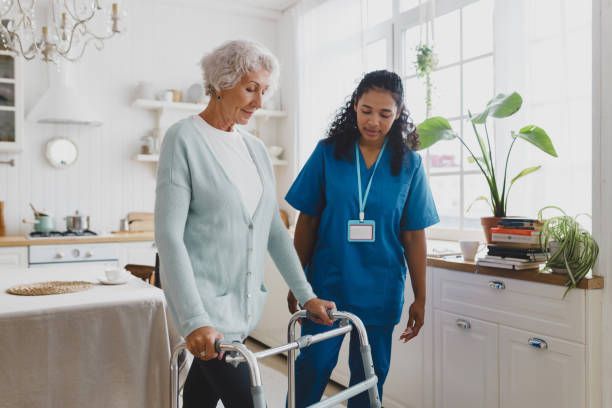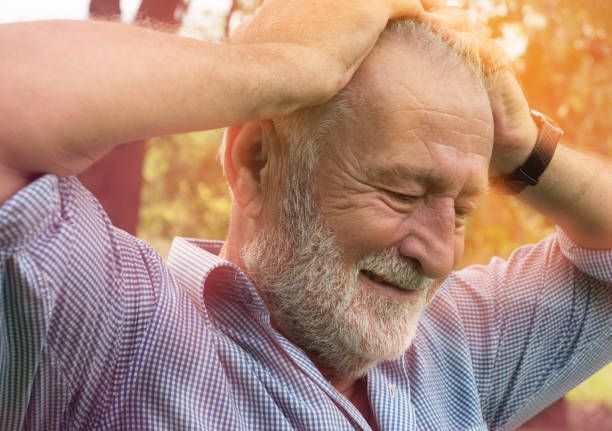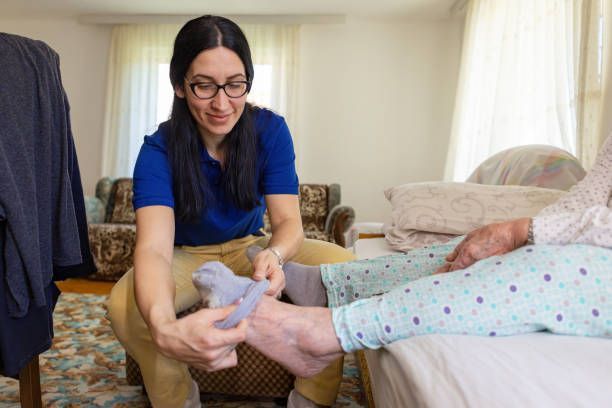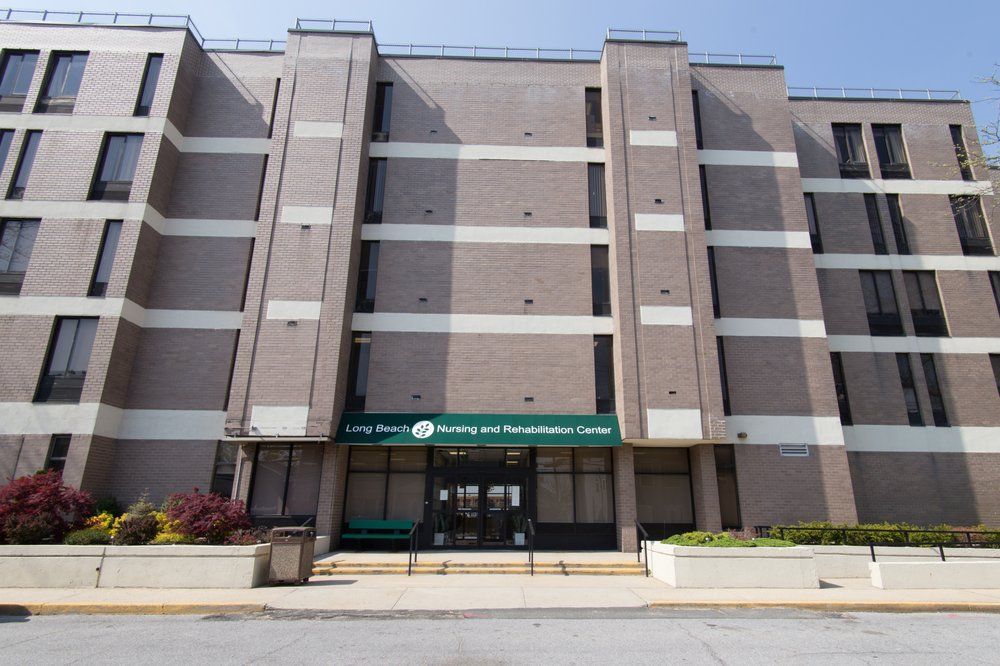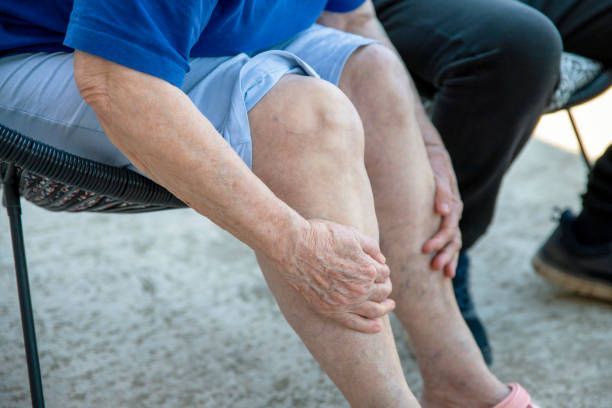Maintaining Bone and Muscle Mass is a Key to Longevity
Maintaining Bone and Muscle Mass is a Key to Longevity
AARP explains "everyone knows that cardio exercise is crucial for overall health. But the secret to staying strong and vital for life isn’t just in walking, running, biking, swimming and other forms of aerobic fitness. It’s in your muscles. In a 2021 review of 16 studies from around the globe, researchers found that just 30 to 60 minutes a week of muscle-strengthening, or “resistance,” exercise increased life expectancy by 10 to 17 percent. What counts as muscle-strengthening exercise? Lifting weights, of course, but also yoga, Pilates, calisthenics and even carrying the groceries (or a grandchild)."

At 7 Day Home Care, we understand that maintaining bone and muscle mass is not just about physical strength—it's a cornerstone of longevity and overall well-being. As we age, the gradual decline in bone density and muscle mass can significantly impact mobility, independence, and quality of life. That's why we believe in proactive measures to preserve and strengthen these vital components of the body. Through personalized care and support, we empower our clients to prioritize their bone and muscle health, enabling them to live life to the fullest for years to come.
More, as we journey through life, the inevitability of aging presents various challenges, including the gradual loss of bone and muscle mass. However, proactive measures can be taken to mitigate these effects, ensuring vitality and mobility well into our golden years. Understanding the science behind bone and muscle loss is crucial in implementing effective strategies to maintain or increase mass as we age.
The Science Behind Bone and Muscle Loss
As we age, the intricate processes that govern bone and muscle health undergo significant changes, leading to a gradual loss of mass and function. The primary mechanism behind bone loss, known as osteoporosis, involves an imbalance between bone formation and resorption. Throughout adulthood, bone tissue undergoes continuous remodeling, with old bone being broken down by cells called osteoclasts and new bone being formed by osteoblasts. However, with advancing age, this balance shifts, with bone resorption outpacing bone formation. As a result, bone density decreases, leading to fragile, porous bones that are prone to fractures. Hormonal changes, particularly a decline in estrogen levels in postmenopausal women, play a significant role in accelerating bone loss, highlighting the importance of hormonal regulation in maintaining bone health as we age.
Similarly, muscle loss, or sarcopenia, is a common consequence of aging, characterized by a gradual decline in muscle mass, strength, and function. Several factors contribute to sarcopenia, including hormonal changes, reduced physical activity, and alterations in protein metabolism. With age, there is a decrease in the production of anabolic hormones, such as growth hormone and testosterone, which play key roles in muscle maintenance and repair. Additionally, older adults often experience a decrease in appetite and protein intake, further exacerbating muscle loss. Moreover, a sedentary lifestyle and decreased muscle usage contribute to muscle atrophy and weakness over time. The loss of muscle mass and strength not only impairs physical performance and mobility but also increases the risk of falls, fractures, and other adverse health outcomes in older adults.
Furthermore, the relationship between bone and muscle loss is closely intertwined, with each condition exacerbating the other. Reduced muscle mass leads to decreased mechanical loading on bones, which in turn accelerates bone loss. Conversely, bone loss diminishes structural support for muscles, leading to decreased muscle function and further exacerbating sarcopenia. This interconnectedness underscores the importance of addressing both bone and muscle health in aging populations. By understanding the underlying mechanisms of bone and muscle loss, researchers can develop targeted interventions aimed at preserving musculoskeletal health and enhancing overall quality of life in older adults.
Risks of Not Maintaining Bone and Muscle Mass
As we age, failing to maintain adequate bone and muscle mass can pose significant risks to our health and well-being. One of the primary risks is the increased susceptibility to fractures and falls. With declining bone density, individuals are more prone to fractures, particularly in weight-bearing bones such as the hip, spine, and wrist. These fractures not only cause pain and disability but can also lead to long-term complications such as loss of mobility, decreased independence, and reduced quality of life. Furthermore, fractures in older adults are associated with higher mortality rates, emphasizing the critical importance of preserving bone mass to prevent such incidents.
Another risk of not maintaining bone and muscle mass is the development of osteoporosis, a condition characterized by weakened bones and increased fracture risk. Osteoporosis can lead to a progressive loss of height, stooped posture, and chronic pain. Moreover, fractures resulting from osteoporosis can have severe consequences, including prolonged hospitalization, decreased mobility, and loss of independence. The economic burden of osteoporosis-related fractures is substantial, placing strain on healthcare systems and impacting individuals' financial well-being. Therefore, preventing osteoporosis through lifestyle interventions aimed at preserving bone mass is crucial for promoting healthy aging and reducing the burden of this debilitating condition.
Additionally, the decline in muscle mass, known as sarcopenia, poses its own set of risks as we age. Loss of muscle strength and function can impair balance, coordination, and overall physical performance, increasing the risk of falls and fractures. Sarcopenia is also associated with functional limitations, difficulty performing activities of daily living, and a higher likelihood of institutionalization. Furthermore, decreased muscle mass contributes to metabolic changes, such as insulin resistance and obesity, increasing the risk of chronic diseases such as type 2 diabetes and cardiovascular disease. Thus, preserving muscle mass through regular exercise, adequate protein intake, and other lifestyle interventions is essential for maintaining independence, mobility, and overall health as we age.
Strategies to Maintain or Increase Bone and Muscle Mass
Fortunately, there are several proactive steps individuals can take to preserve bone and muscle health as they age:
- Regular Exercise: Engaging in weight-bearing exercises, such as walking, jogging, or resistance training, helps stimulate bone formation and maintain muscle mass. Strength training exercises, in particular, are effective in building muscle and increasing bone density.
- Balanced Diet: Consuming a diet rich in calcium, vitamin D, protein, and other essential nutrients is crucial for bone and muscle health. Dairy products, leafy greens, nuts, and lean meats are excellent sources of these nutrients.
- Supplements: In cases where dietary intake is inadequate, supplements such as calcium, vitamin D, and protein powders may be beneficial. However, it's essential to consult with a healthcare professional before starting any supplementation regimen.
- Quit Smoking and Limit Alcohol: Smoking and excessive alcohol consumption have been linked to bone loss and muscle weakness. Quitting smoking and moderating alcohol intake can help preserve bone and muscle mass.
- Regular Health Check-ups: Periodic screenings for osteoporosis and other bone-related conditions allow for early detection and intervention. Similarly, routine physical examinations can help monitor muscle strength and functional capacity.
- Lifestyle Modifications: Maintaining a healthy body weight, getting an adequate amount of sleep, and managing stress are essential components of overall health and can positively impact bone and muscle mass.
It's important to note that while maintaining bone and muscle mass is beneficial for longevity and overall health, individual results may vary. Factors such as age, underlying medical conditions, genetics, and lifestyle habits can all influence the effectiveness of efforts to preserve bone and muscle mass. Additionally, any changes to diet, exercise, or medical treatments should be discussed with a qualified healthcare professional to ensure they are safe and appropriate for your specific circumstances. This discussion should be an ongoing dialogue with your doctor and other healthcare professionals.
While the aging process inevitably brings changes to our bodies, it's within our power to take proactive steps to maintain or increase bone and muscle mass. By understanding the science behind bone and muscle loss and implementing lifestyle modifications such as regular exercise, a balanced diet, and healthy habits, we can age gracefully and enjoy optimal health and mobility in our later years.
At 7 Day Home Care, we recognize that maintaining bone and muscle mass is paramount for promoting longevity and enhancing overall quality of life. As an award-winning agency offering affordable home health care services in Manhattan, Brooklyn, Queens, and Long Island New York, we are committed to empowering our clients to prioritize their bone and muscle health. Our comprehensive approach to home care ensures that individuals receive the personalized support they need to thrive in the comfort of their own homes. Contact us today at 516-408-0034 or visit here to learn more about how we can assist you or your loved ones in achieving optimal health and well-being.
Brian Callahan
7 Day Home Care


